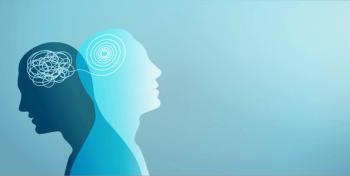
Study Assesses Current Research on Blue Light Blocking Treatment for Bipolar Disorder
Although research is limited, the results are promising.
Researchers conducted a review of clinical studies assessing the efficacy of
Blue light blocking treatment, or the process of blocking transmission of shorter-wavelength light at 450 nm to 470 nm, has been suggested as a potentially beneficial treatment for bipolar disorder by a limited number of clinical studies. The investigators—who are affiliated with Aristotle University of Thessaloniki in Thessaloniki, Greece—conducted a literature review and assessment of the relevant research thus far. They searched the Scopus and PubMed/MEDLINE databases using the keywords, blue blocking glasses OR amber glasses OR blue light AND (mania OR bipolar), which yielded 183 results from the past 15 years. After exclusion criteria were applied, only a handful of studies remained, from which the investigators selected 3 to assess.1
The first of these was a study from 2008, which allowed participants to try the treatment, but did not include a control group. The next, from 2016, was a randomized controlled trial of 42 inpatients with mania; the researchers found that patients who wore blue-light blocking glasses (BBG) experienced higher sleep efficiency, a decline in motor activity, and a fast decline in symptoms that lasted for a week. And the third, from 2020, assessed the impact of BBG on outpatients with euthymic bipolar disorder and insomnia by having participants use size-adjustable BBG from 20:00 until bedtime for 2 weeks; the researchers reported that, although there were no detected changes in actigraph-recorded sleep parameters, subjective sleep quality, or mood symptoms, they did note a favorable shift of the circadian rhythm.1
The investigators concluded that research on blue light blocking treatment for bipolar disorder is promising, but still very limited.1 “This in part is due to the limited body of knowledge of the effect of circadian rhythm disruption on the course of the disease, and the source of this disruption,” they wrote. “The ease of application of this novel treatment, however, may be useful in order to ascertain the differential impact of various factors on circadian dysfunction in bipolar disorder. Careful planning of future studies is of paramount importance, given the complexity of the underlying pathophysiology.”
Reference
1. Mylona I, Floros GD.
Newsletter
Receive trusted psychiatric news, expert analysis, and clinical insights — subscribe today to support your practice and your patients.














